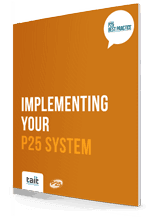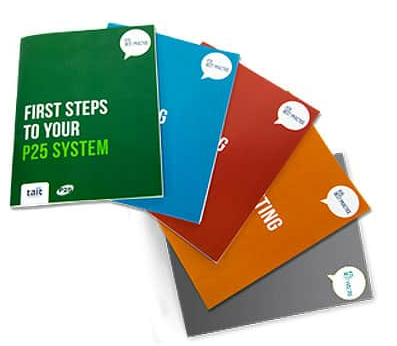The next step in our series of P25 System guides: in this issue, we take a look at implementing your P25 system after you have selected a vendor and specified system requirements. It’s time to get your network up and running.
This Best Practices Guide for implementing P25 systems discusses some common issues when getting a new network up and running. It addresses the sea of documentation that is required, and how to prepare work personnel for the challenges that the new communications system may bring.
Contract Execution
This guide assumes that you have carefully examined and executed your contract with all parties involved, including your consultants and vendor. As soon as possible after the execution of the contract, it is good practice to hold a kick-off meeting with your vendor. This is a time for both sides to:
- Introduce all key participants
- Set up high level expectation
- Reaffirm the project objectives for everyone
- Establish lines of communications
- Prepare for the system design review
System Design Review (SDR)
A system design review is intended to finalize as many details of the design and related project as possible. You need to invest significant time and preparation for a System Design Review. The purpose of this meeting is to lock in the design & project plan and enable the vendor internal procurement efforts – production equipment, purchasing third party devices, and signing up subcontractors.
The system design review provides a good opportunity to revisit and finalize a number of detailed information reports. The following technical documentation are examples of detailed information reports of high level information to consider as part of a SDR:
Technical Design Documentation
- System Architecture
- Detailed site drawings (RF, dispatch, backhaul equipment configuration, antenna system design, site improvements or new site details)
- Detailed list of purchased items including software features and associated licenses.
Implementation plan
- Detailed statement of work identifying resources and assigning responsibilities to the vendor or buyer.
Factory Acceptance Tests (FAT)
Factory Acceptance Tests are conducted to:
- Test the system in a lab environment before it gets shipped and installed at your site
- Allows you to become familiar with your new system
- Clarify any differences between your expectations and reality
Factory Acceptance Tests are valuable when undergoing a major technological change.
Tests performed during FAT include:
- Visual inspection of components
- Verification of electrical parameters of the equipment (e.g. base station output power or sensitivity)
- Functional tests (e.g. group or emergency calls across multiple sites)
- System resiliency (e.g. automatic switchover)
- Other aspects of the system as previously agreed.
Where technology change and/or the size of the system is limited, you may be able to save some time and money by foregoing the FAT and rely on your vendor to perform the necessary tests before shipment.
System Implementation
The role of system implementation is limited to:
- Monitoring the progress
- Facilitating access to the sites where work needs to be done
- Preparing for the next steps via details migration planning, subscriber fleet planning, and training
It is not necessary to monitor all installation and commissioning activities. However, many system buyers delegate some of their own technical resources to participate, as they provide an excellent opportunity for hands-on training.
Formal progress monitoring is typically accomplished via regular communications from the vendor, usually structured meeting or conferences with formal progress reports.
Download your Free Guide
This is but a brief explanation of Implementing your P25 System, the full version of this resource is available for free. Download your copy today.
 Download the full suite of P25 Best Practice guides.
Download the full suite of P25 Best Practice guides.
Learn more about P25 Best Practice.




